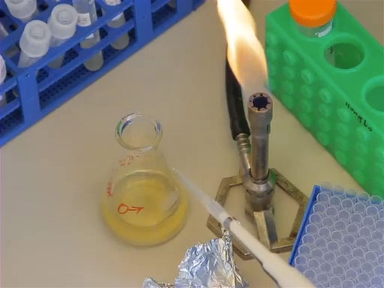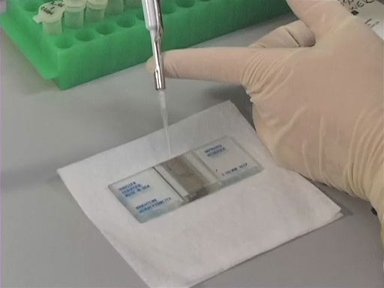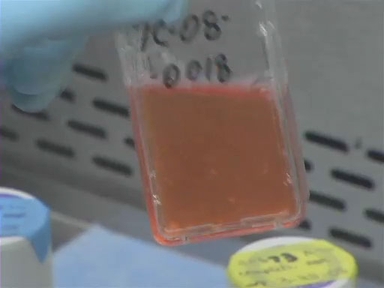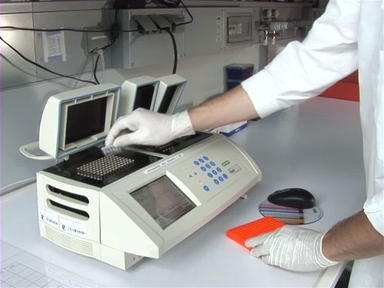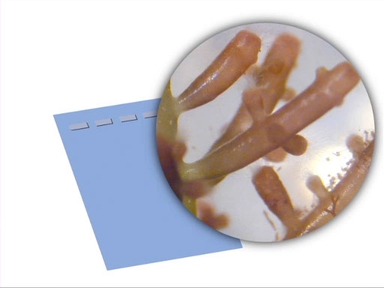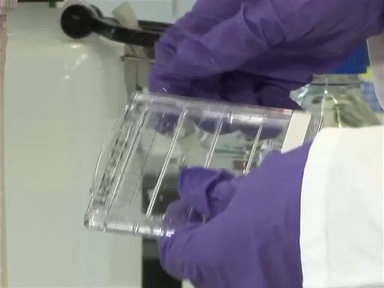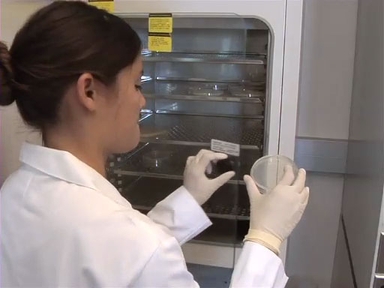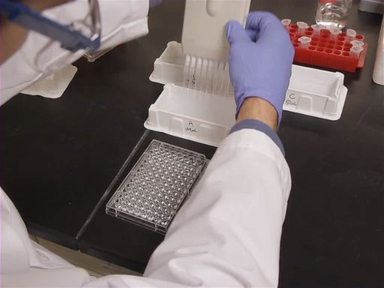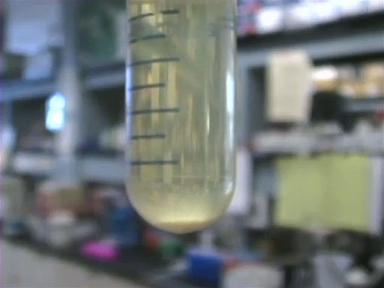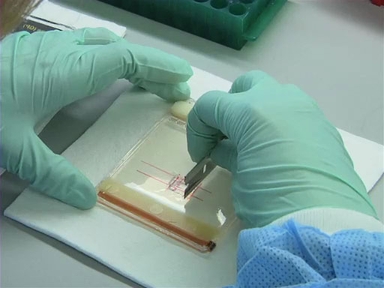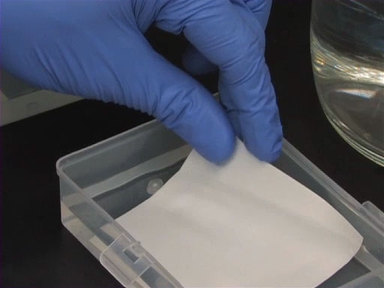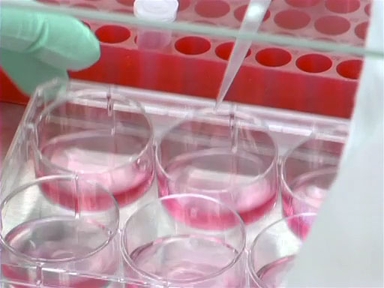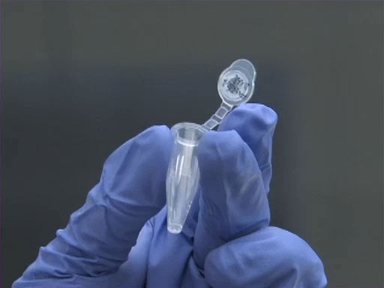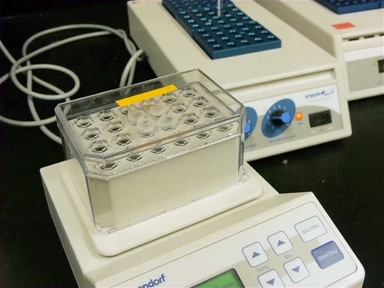Bacterial transformation is a widely used method where foreign DNA is introduced into a bacterium, which can then amplify, or clone the DNA. Cells that have the ability to readily take up this DNA are called competent cells. Although transformation is naturally occurring in many types of bacteria, scientists have found ways to artificially induce and enhance a bacterial cell’s competency. In this video we will talk about one of these ways, heat shock transformation.
Before we talk about the heat shock technique, let’s first discuss the type of DNA most-commonly-used in bacterial transformation: the plasmid. A plasmid is a small, circular, double-stranded DNA that can reduce its size by supercoiling, so that it can easily pass through pores in a cell membrane.
A plasmid contains a few important regions worth mentioning. Commercially available plasmids contain a multiple cloning site or MCS. This region contains specific sequences recognized by restriction endonucleases or restriction enzymes, which cleave DNA. DNA fragments of interest to the researcher can be inserted into the multiple cloning site when the plasmid and DNA fragment are cut with the same endonucleases.
Plasmids also contain an Origin of Replication, or ORI, that provides information to the cell as to where replication of the plasmid should begin.
In addition to the origin of replication and the multiple cloning site, most plasmids will include an antibiotic resistance gene. This gene confers antibiotic resistance to all cells that contain the plasmid, allowing those cells to survive in antibiotic-containing media.
Now that we’ve discussed plasmids, let’s talk about the cells into which they will be introduced: the competent cells. The most commonly used type of bacteria in molecular biology research, and transformation is E. coli, which happens to also inhabit your lower intestine. Cells are typically made competent via exposure to a calcium rich environment.
The positive charges of the calcium ions neutralize the negative charges of both the plasmid and the bacterial cell wall dissipating electrostatic repulsion and weakening the cell wall.
By exposing cells to a sudden increase in temperature, or heat shock, a pressure difference between the outside and the inside of the cell is created, that induces the formation of pores, through which supercoiled plasmid DNA can enter. After returning the cells to a more normal temperature, the cell wall will self-heal.
Once cells have taken up the plasmid, they will be able to grow on agar plates laced with antibiotic.
Before starting heat shock transformation, clean the work area and make sure all equipment is sterilized.
Ensure that you have enough media and agar prepared, which provide the nutrition to the bacteria you will make competent. Also be sure to sterilize all solutions via autoclaving. Allow liquid media to cool to room temperature before use and let the agar cool to 50-55˚C, the temperature at which antibiotic can be added and plates poured. Allow plates to cool to room temperature to solidify.
When working with bacteria, one should always use aseptic technique to maintain sterility. Aseptic technique typically involves the use of a Bunsen burner to sterilize instruments and reagents and create a convection current – which keeps airborne contaminants out of the workspace.
Immediately before the heat shock reaction, pre-warm your media to room temperature and antibiotic-containing LB agar plates to 37°C. Also make sure that your water bath is at 42°C.
Next, thaw chemically competent cells on ice.
Add, 1-5uL of 1ng/μL cold plasmid to the bacterial cells, mix gently, and return the cell and plasmid mixture to ice for 30 minutes.
When time is up, heat shock the cell and plasmid mixture by placing it in a water bath at 42˚C for 30 seconds.
Immediately after taking the tube out of the water bath put it on ice and add 450μL of media. Place it in a shaking incubator for 37°C for 1 hour at over 225 rpm so that the cells can recover.
Using proper aseptic technique, add 20-200uL bacteria to an LB agar plate and spread the medium around with a bacterial spreader. Incubate the plates overnight at 37˚C upside down to prevent exposure of bacteria to condensation.
The next day, the bacteria that have taken in the plasmid form colonies.
Next, count the colonies to calculate the transformation efficiency, which is the number of successful transformants divided by the total amount of DNA plated.
Now, colonies can be selected for further experimentation.
Prior to being made competent the bacteria used in transformation are stored in the freezer. They must be thawed on ice, spread on an agar plate – without antibiotics, and allowed grow overnight at 37˚C.
Using aseptic technique, select a bacterial colony from the agar plate and grow it up in a large 500 ml culture overnight at 37˚C in a shaking incubator – an instrument, which prevents sedimentation of the bacteria and even dispersal of nutrients in the media.
While the cells are growing make 0.1 molar calcium chloride and 0.1 molar calcium chloride plus 15% glycerol solutions, autoclave, and let cool.
Absorbance measurements are used to determine whether or not the bacteria are in their mid-log phase of growth, which means they will readily take up DNA. Once cells have reached this phase, place them on ice and keep them there throughout the procedure.
Next, separate the bacterial cells into two large centrifuge tubes and spin at 4°C. Pour off supernatant and resuspend in about 100 ml 0.1 molar of cold calcium chloride. Then, incubate cells on ice for 30 minutes. This step is repeated at least once more. Cycles of spinning and resuspending cells are often referred to as washing your cells.
After the final wash, resuspend cells in a cold 50mL 0.1 molar calcium chloride plus 15% glycerol solution. These cells are now chemically competent.
Distribute 50μL of bacteria into multiple microfuge tubes and store at -80˚C until ready for heat shock.
Many applications and variations of bacterial transformation exist.
In addition to heat shock, eletroporation is another common technique for transformation. As it’s name implies electroporation involves using electricity to make pores in the bacterial cell membrane through which DNA can pass.
With respect to screening for transformed bacteria, plasmids often contain a gene encoding the enzyme beta-galactosidase to aid with screening. When the substrate for this enzyme is included in agar plates, bacteria that have been transformed with plasmids containing an insert yield white colonies, while those that do not, yield blue colonies. This method is referred to as blue and white screening.
In most transformation experiments the goal is to get rapidly dividing bacteria to make large quantities of your plasmid, which includes your target gene. Following bacterial transformation, the next step is to grow up large quantities of the bacteria in antibiotic-containing liquid medium and perform plasmid purification, which, as it’s name suggests, involves purifying the plasmids from bacteria. Many commercial kits are available for this purpose.
Sometimes the goal of transformation is to have bacteria generate large amounts of protein encoded by the plasmid. Here you see bacterial cells being homogenized and lysed before a technique called affinity purification can be performed to isolate the target protein. After purifying large amounts of the protein it can then be crystallized and structure of the particular protein of interest can be identified.
You’ve just watched JoVE Introduction to Heat Shock Transformations. In this video we reviewed: what heat shock transformation is and how it works, the principal behind it and how to successful transform bacteria. Thanks for watching!
